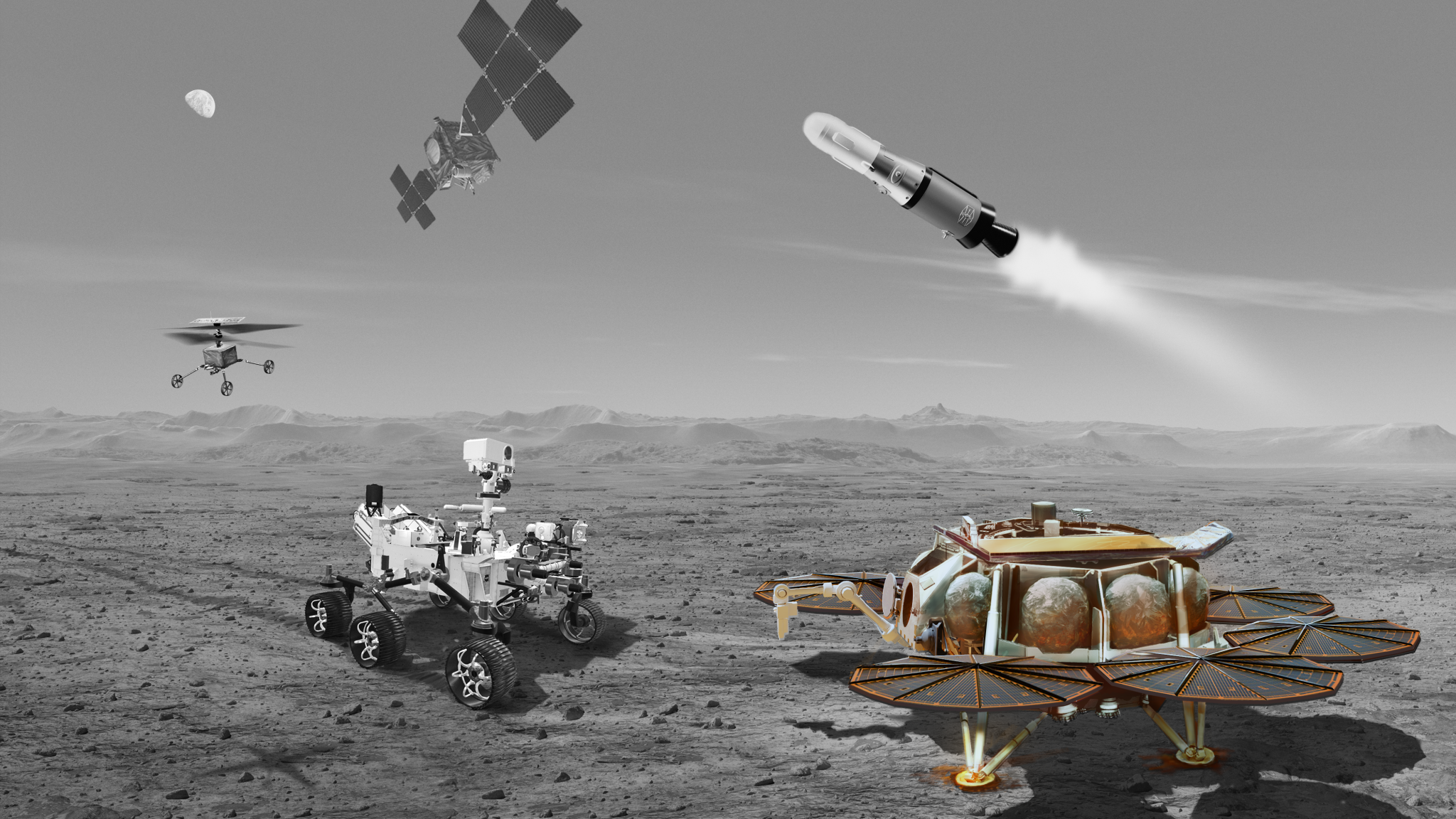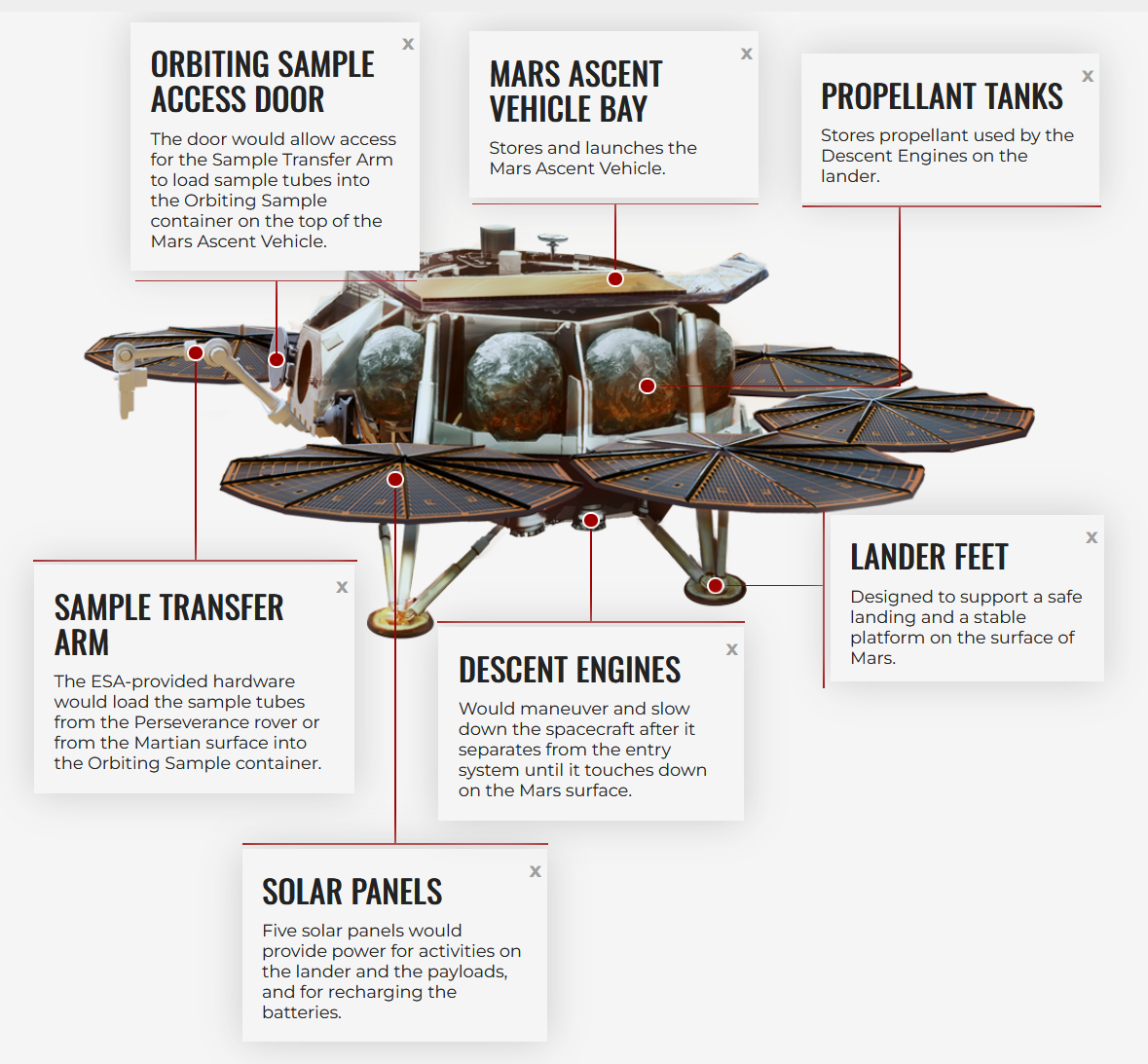Mars Sample Return
Sample Retrieval Lander
NASA's Sample Retrieval Lander would touch down on Mars and remain in place to receive a diverse collection of scientifically curated samples of Martian rock collected and cached by NASA's Perseverance rover.
NASA's Sample Retrieval Lander would touch down on Mars and remain in place to receive a diverse collection of scientifically curated samples of Martian rock already collected and cached by NASA's Perseverance rover.
The lander would be the first ever to bring along a rocket — NASA's Mars Ascent Vehicle — and two helicopters, to help achieve the goal of bringing the samples safely to Earth for study. The Mars Ascent Vehicle would launch off the Red Planet, carrying samples into Mars orbit to meet the Earth Return Orbiter provided by the European Space Agency (ESA).
In addition, the lander would carry ESA's Sample Transfer Arm to load the sample tubes into the Mars Ascent Vehicle.
Testing Mars Sample Return
Finding the Right Footpad Size for the Sample Retrieval Lander
In this video, engineers use a special testing rig to focus on the full-scale footpad for the Sample Retrieval Lander. Finding the right size and characteristics for the lander footpads is critical to a safe touchdown.
Testing the Landing Gear for All Scenarios
In this series of tests, engineers drop a three-eighths-early-concept lander model of the Mars Sample Retrieval Lander onto a steel plate to simulate hitting a rock on touchdown.
Anatomy of the Sample Retrieval Lander
Tech Specs
| Length | About the size of an average two-car garage; tentatively planned to be 25.4 feet wide (approximately 7.7 meters) and 6.9 feet high (2.1 meters) with solar panels deployed |
| Mass | Approximately 7440.6 pounds (3,375 kilograms) |
| Weight | Approximately 7,440 pounds (approximately 3374.7 kilograms) on Earth Approximately 2,790 pounds (approximately 1265.5 kilograms) on Mars |
| Deck Height | 82.7 inches (approximately 2.1 meters) |
| Robotic Arm Length | 78.7 inches (approximately 2 meters) outstretched |
| Power Source | Five solar panels, approximately 7.2 feet (approximately 2.2 meters) in diameter, and a secondary battery to power the lander on the surface of Mars. |






























